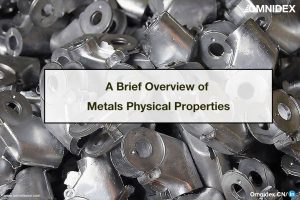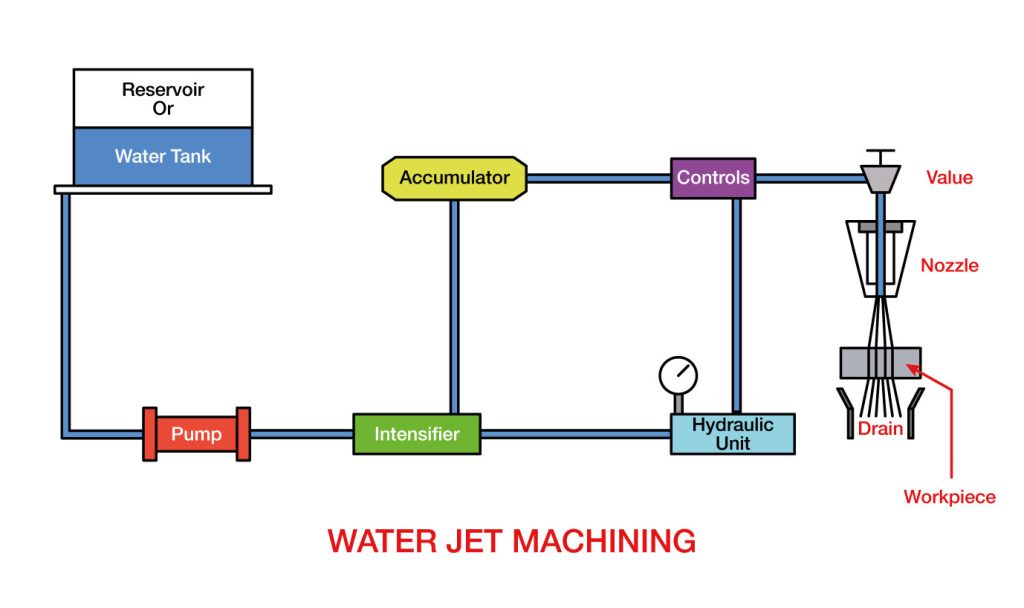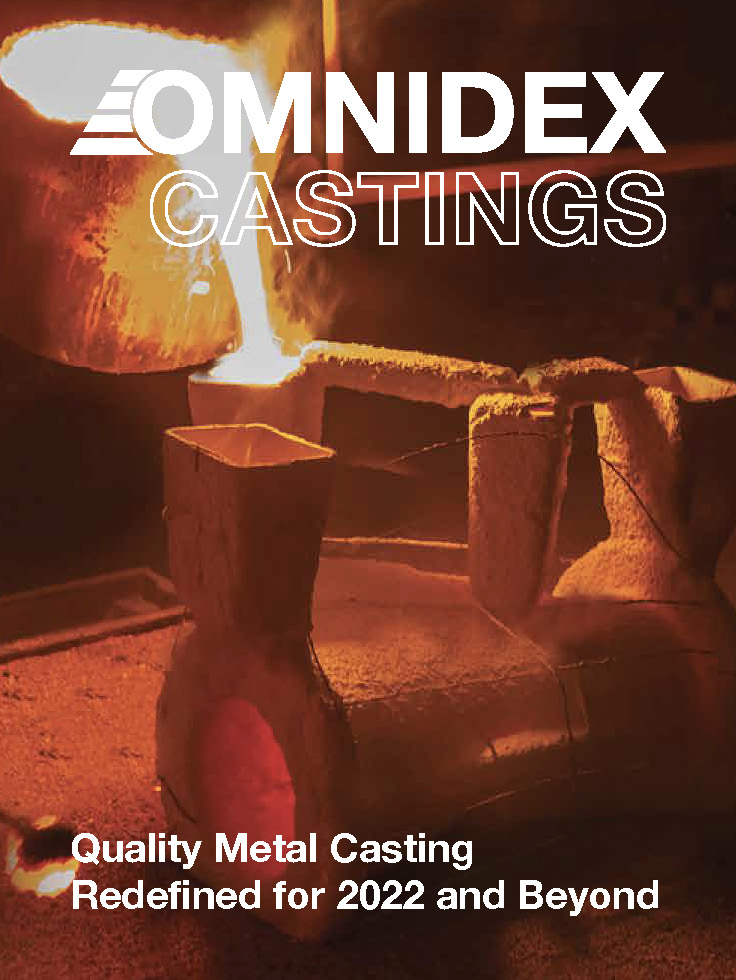

Iron vs steel: What are the Differences Between Metal, Iron and Steel
The Water Jet Machining (WJM) process is an advanced, non-conventional machining process wherein a water jet is fired at the workpiece. The jet erodes the material of the workpiece and causes it to become shaped, i.e. jetting is a machining process that utilizes a water jet to remove material from a workpiece.
Water emerging from the nozzle has a pressure of 60,000 pounds per square inch or 4137 bar. This means that the pressure is over 4000 times greater than the normal atmospheric pressure (1 bar). Hard materials cannot be machined with simple water jet machining. It is only suitable for softer materials such as rubber, ABS, leather, wood, and plastics.
In order to increase the machining capability of water jets, abrasive particles are mixed with the jet of water. With mixed abrasives, hard materials such as aluminum, steel, granite, and cast irons can be machined.
WJM is similar to Ultrasonic machining and Abrasive jet machining in that the workpiece is machined mechanically. For precise and automated control, this machining process is paired with a CNC machine.
When high-velocity jets of water strike a workpiece, they cause erosion of the workpiece material, which results in machining.
Simple water jet machines are almost like their abrasive counterparts in terms of construction and operation. In order to better understand the abrasive jet machine, let’s examine its construction and operation.

Water is stored in the reservoir for use as a jet.
The pump will take water from the reservoir and transfer it to the intensifier. The pump creates pressure in the water from 1500 to 4000 bars. A 50 to 100 HP electric motor is used.
The water jet intensifier creates a high-pressure liquid jet is by increasing water jet pressure. This intensifier is connected to the accumulator. Water is taken in at low pressure and expelled at high pressure through an accumulator. The mechanism works by hydraulic reciprocation.
Water is temporarily stored in the accumulator. Several control valves are connected to the accumulator. By keeping the flow of high-pressure water continuous, it eliminates pressure fluctuations.
The control valve controls both the amount and the pressure of water being passed. It directs the water to the flow regulator. Kinetic energy is then transferred from pressure energy to the flow regulator.
A flow regulator regulates the flow of water that reaches the control valve. By adjusting the flow regulator, water will be sent to the nozzle, where it will be transformed into high-velocity water.
The nozzle produces highly kinetic jets of water from high pressure. Since the nozzle’s area decreases at its end, this creates more kinetic energy. Finally, the water jet is directed at the workpiece.
A stream of water will flow from this orifice when water is directed by the nozzle.
It is necessary to use high pressure tubes to flow water under high pressure. Tubes typically range in size from 6 mm to 14 mm in diameter. The cutting head can also be moved with great flexibility.
Water is collected in the catcher or drain after the workpiece is cut. From here, the water may proceed for further purification or be recirculate.
Water jet machining can be used for the following purposes:
With more than 78 manufacturing processes, including metal casting, metal fabrication, precision CNC machining, plastic fabrication, metal finishing and more, etc., in addition to our 200+ sub-contractor partners, OmnidexCN is able to support every project or component production regardless of the development stage or mass production.
You can find out more about our diverse industrial manufacturing services and solutions by contacting us.
Contact our Customer Service and let us know how we can help to catapult your next project to success.

If you are looking for metal casting services, our brochure is a great way to discover what Omnidex has to offer. You can download HERE or EXPLORE HERE to learn more or .


If you are looking for metal casting services, our brochure is a great way to discover what Omnidex has to offer. You can download HERE to learn more.

Copyright © 2024 Omnidex. All rights reserved.